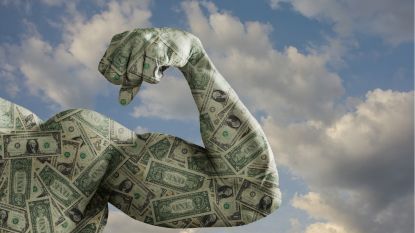According to the U.S. Dollar Index (opens in new tab), which measures the currency against a number of significant trading partners, including the euro, Japanese yen, British pound, Canadian dollar, Swedish krona and Swiss franc, the worth of the U.S. dollar has risen by nearly 9.3% during the past year. By comparison, the British pound plunged 11.2% over the past year.
“The greenback has gone ballistic,” according to a Barron’s (opens in new tab) piece in late September 2022, as the dollar hovered at a 20-year record high. Nearly every major currency lost value (opens in new tab) against the U.S. dollar throughout 2022 thanks to the Federal Reserve’s campaign to rein in inflation with higher interest rates. The Fed is expected to continue regular rate increases into 2023.
While conventional logic would suggest a rising U.S. dollar bodes well during a period of runaway U.S. inflation, it is bad news for investors and the overall health of the American economy.
Subscribe to Kiplinger’s Personal Finance Be a smarter, better informed investor.
Save up to 74%
Sign up for Kiplinger’s Free E-Newsletters Profit and prosper with the best of Kiplinger’s expert advice on investing, taxes, retirement, personal finance and more – straight to your e-mail.
Profit and prosper with the best of Kiplinger’s expert advice – straight to your e-mail.
Cons of the Strong U.S. DollarA strong U.S. dollar means lower costs for imported goods, which translates to less-expensive consumer items, but in the face of a record inflation and quantitative tightening, it only exacerbates the ongoing contraction on multinational corporations’ top and bottom lines. About 40% of the revenue in the S&P is international. The tech sector specifically is greater than 50%.
Troubling U.S. and Global ImplicationsTo make matters worse, the Russian war in Ukraine coupled with the high U.S. dollar valuation is very troubling. Most commodities are priced in dollars. This makes necessities like oil and wheat more expensive, threatening the ability of some countries to access sufficient quantities of essential supplies.
The same is true of public debt. The high U.S. dollar value bumps up the cost of interest payments for foreign entities and citizens with U.S.-based loans.
And, while a stronger dollar is slowing the rate of inflation in the U.S., it is increasing the rate of inflation in much of the rest of the world. The global economy is weakening, as a result.
The situation we face is a double-edged sword. Unfortunately, there is no simple solution. Continuing inflation in the U.S. would mean higher costs for consumers. A stronger U.S. dollar helps limit inflation. Yet, a stronger dollar means less revenue coming from abroad to fuel the profits of U.S. companies.
The Strong U.S. Dollar Triggers Worldwide Inflation and Economic RiskThe dollar’s surge has made difficult situations worse (opens in new tab) in the rest of the world. Central banks in other countries must raise interest rates in an effort to prop up their currencies. But the higher rates contribute to weakened economic growth and higher unemployment.
Citizens from Cairo to Istanbul to Manchester, England, and around the globe face life-changing inflation, which threatens their livelihood and ability to afford a place of residence.
Inflation makes imports to other countries more expensive, adding to their pressures. Companies, consumers and governments outside the U.S. that borrowed in dollars experience greater pressure — since more local currency is needed to convert into dollars when making loan payments.
The global economy is expected to fall into recession in 2023 (opens in new tab), due in part to the worldwide chain reactions resulting from the strong U.S. dollar.
The Strong U.S. Dollar and Investment ProspectsIn a rising-dollar environment, foreign investments generally underperform.
And the price of U.S. stocks and bonds won’t be as attractive to foreign investors, since they’ll be more expensive when purchased with currency of lesser value. A significant subgroup of the S&P 500 are companies like Apple, Microsoft and Alphabet, which derive a substantial percentage of their revenue from overseas. These companies could experience valuation pressures as revenues subside.
Overall, the knock-on effects of an overly strong dollar environment mean price pressures for U.S. stocks. As one rises, the other drops.
But certain types of stocks typically do well when the dollar is strong. Generally, if the dollar’s value increases, U.S. imports increase, while U.S. exports fall. So investing in the right industries that export to the U.S. could result in profits.
Though a strong dollar seems like a positive component of a healthy economy, globalization makes it a drag on U.S. markets and economic growth, among other perils, in this rough market environment.
Curbing inflation by raising interest rates is a necessary action, but it does upset the balance of the global economy and create a challenging situation for investors, which requires thoughtful insight.
This article was written by and presents the views of our contributing adviser, not the Kiplinger editorial staff. You can check adviser records with the SEC (opens in new tab) or with FINRA (opens in new tab).
